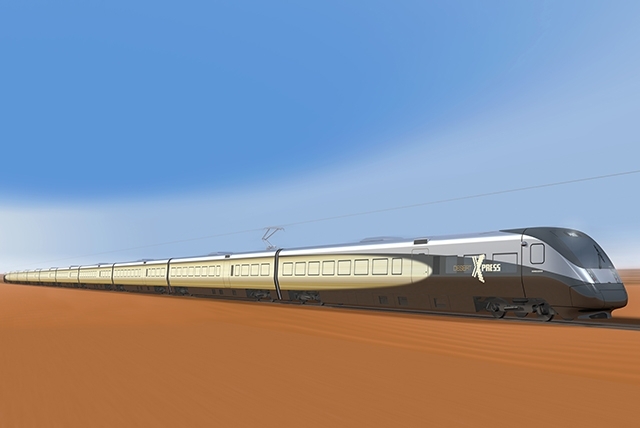EDITORIAL: High-speed rail a big boondoggle
Who would win a race from Las Vegas to Southern California, a high-speed train or a tortoise? It's such an easy call that oddsmakers wouldn't set a line. The tortoise would win — in a walk.
For about three decades, rail advocates have been talking about a bullet train that would connect the valley to its most important visitor market. And talking. And talking some more. Plans for magnetic levitation trains, traditional steel-wheel trains and even solar-powered trains have gone nowhere because every proposal required a huge taxpayer subsidy to move beyond the drawing board.
If an especially slow tortoise started stepping from Las Vegas to Los Angeles when the first Nevada-to-California high-speed train route was pitched, that reptile could have made it there and back twice -- and gotten a head start on a third round trip.
Now comes the latest rail proposal, a repackaged, refinanced version of a plan familiar to Southern Nevadans.
The XpressWest train was supposed to connect Las Vegas to Palmdale, where it would be able to connect with California's planned $64 billion, publicly funded high-speed train from Sacramento to San Diego. But Xpress West stalled more than two years ago when its application for a $5.5 billion federal loan was suspended because, among other shortcomings, it failed to meet "Buy America" rules.
Now XpressWest has Chinese partners and, according to their new limited liability company, $100 million in capital and a goal of starting construction on a Las Vegas-to-Palmdale route by late next year. But no one on the Nevada side of the company wants to talk about it yet.
Perhaps that's because $100 million isn't enough to get such a rail line out of town, let alone all the way to California's population centers. Will the partnership be able to raise billions more dollars privately? There's no reason to think the group will try — not when federal bureaucrats and planners are still interested in lending billions of tax dollars for high-speed rail.
It will take a guaranteed loan to complete the project, because high-speed rail lines are boondoggles. They're so expensive to build and operate that they can't compete with air service. According to the Reason Foundation, only two high-speed rail lines are profitable — one in Japan and one in France — and another line in Japan barely breaks even. The United States is so geographically vast that even traditional rail service isn't viable. The U.S. government provides Amtrak with more than $1 billion in capital and operational subsidies per year.
Members of Congress complain frequently about the country's crumbling infrastructure, about roads and bridges needing billions and billions of dollars worth of repair or replacement. So why is anyone even considering loaning billions of dollars for a rail line — any rail line — that will serve a tiny slice of the population?
Out of principle, Nevadans should oppose fleecing all Americans for their own benefit. If the private sector can't build a high-speed train on its own, it shouldn't be built at all. And there's no guarantee cash-strapped, drought-plagued California will ever complete its rail line to connect with Nevada's.
We'll still bet on the tortoise beating high-speed rail — if anyone will take the wager.



















